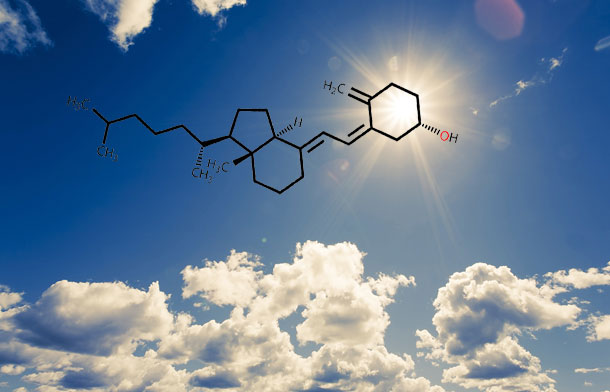
Polenta. The variety of a dish
April 27, 2013
Mission statement by the editors
May 28, 2013It may be that the best things in life really ARE free. For example it looks like a vitamin that we can obtain just by standing in a pool of sunlight, may have staggering implications – and benefits – for our good health.
A
At this time of year, depending where on the Earth you are, the doldrums – the dark, dreary days of winter – are either just beginning or coming to an end. In the northern hemisphere the cold of winter is fading away, being replaced by the rebirth of spring. In the southern hemisphere the lazy days of summer have drifted into the crisp autumn air that carries falling leaves on its breath. In either place, we find ourselves instinctively slowing down, impulsively stopping, turning our faces up to the sun to receive its warmth, its energy. Our bodies are sensing that it has been too long since or will be too long before we have basked in the healing light of the sun. In this age of sun block, layers of clothing, working indoors, smog and air conditioning, we find that the sun provides us with something crucial to our health. Every year the research linking this important nutrient to well being multiplies: vitamin D.

Food rich with vitamin D
Worldwide there are about a billion people who are vitamin D- deficient. The normal range of serum vitamin D is 40-60 mcg/ml. An insufficient level is considered to be between 15-29 mcg/ml. One is considered to be deficient with a serum level of less than 15 mcg/ml. Deficiencies can be found in all ethnicities and age groups. In the US, 9% of children participating in the National Health and Nutrition Examination Survey (NHANES) are deficient in vitamin D, and another 66% have insufficient levels. The numbers are staggering. The implications are even more so.
Vitamin D is both a nutrient and a fat-soluble prohormone which was discovered in the early 20th century. Although there are five types of vitamin D, Vitamin D2 (ergocalciferol) and D3 (cholecalciferol) are the major biologically inert types used by humans to produce active vitamin D. Vitamin D2 is found naturally mainly in a handful of mushrooms and in other plant sources that have been enriched. Vitamin D3 is made in the body from cholesterol when the skin is exposed to ultraviolet B (UVB) rays of the sun.
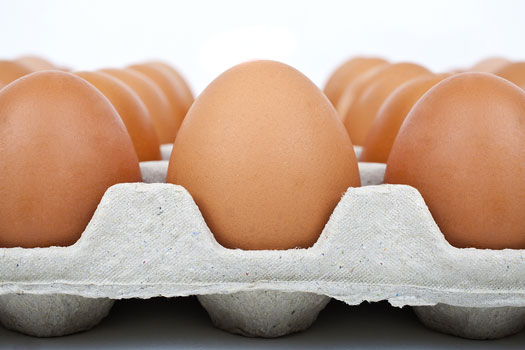
Food rich with vitamin D
Both D2 and D3 are modified in the liver to form calcidiol, which then travels to the kidneys where it is again modified to make calcitriol – the biologically active form of vitamin D. Calcidiol has a fifteen-day half-life, whereas calcitriol has a fifteen-hour half-life. A half-life is the time it takes for the body to metabolise half of the original amount. For example: if the half-life of calcitriol is fifteen hours and you started with 100 IU, in fifteen hours you would have 50 IU. Therefore serum measurements are usually of calcidiol to define deficiency.
Vitamin D’s journey in our bodies takes it through some of our most important organs: from the skin, to the liver, to the kidneys, meandering through the blood to interact with a plethora of cells in our system. It has functions for immunity, bones, brain, gut, nerves, inflammation and that’s just what we know at this moment!
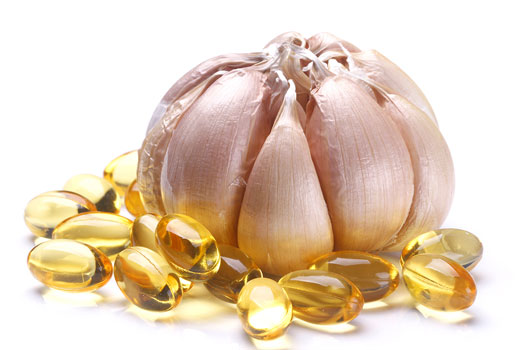
Food rich with vitamin D
To maintain adequate vitamin D levels, a person requires, on average, ten-fifteen minutes of UVB sun exposure (when the UV index is greater than 3), at least three times a week, without sunscreen. Your face, arms, back or legs must be exposed. The length of time needed will increase with increasing skin melanin content. A UV index of 3 occurs daily in the tropics and most days in summer, spring and autumn in the temperate zone. The further you move away from the equator, the fewer days there are in which the UV index is above 3. Smog, cloud cover and sun block also have an effect on the absorption of UVB rays. When vitamin D levels reach equilibrium the body stops producing it and begins degrading it – you cannot overdose from the vitamin D produced within the body from the sun.

Food rich with vitamin D
It is difficult to get enough vitamin D from diet alone to maintain health, especially if you are following a low cholesterol or low fat diet. Some food sources of vitamin D are:
- Fatty fish, such as tuna, mackerel and salmon -these are also omega -3 rich sources (see “The Balancing Act” in Dantemag, April/May 2012)
- Fish liver oil (yes, the stuff your grandmother used to drink)
- Oysters
- Beef liver
- Kelp
- Seaweed
- Cheese
- Egg yolks
- Mushrooms
- Fortified cereals, breads and milk
Supplementation may be indicated to acquire adequate vitamin D levels – suggestions range from 800 IU a day to 2000 IU a day in summer and up to 5000 IU a day in winter, depending on your geography, age, genetics, environment and daily routine. Some scientists feel that even these amounts are very conservative and do not incorporate the recent research on vitamin D and its relationship to health and disease. Many people rely on multivitamins for vitamin D. which usually contain about 400 IU vitamin D. This level of supplementation has been found to be too low to adequately influence health for most people. Manufacturers have started adding up to 1000 IU to multivitamins, but that still might not be adequate. Garland, et al., estimated in a study published in the Annals of Epidemiology in 2009 that raising the minimum serum vitamin D levels to 40-60 ng/ml would prevent approximately 50,000 new cases of breast cancer and 49,000 new cases of colorectal cancer each year, and three quarters of the deaths from these diseases in the US and Canada. This was based on observational studies combined with a randomised trial. The authors feel that 2000 IU (50 mcg) a day is completely safe and that 4000 to 8000 IU is needed to maintain blood vitamin D at a level that would combat disease.
The suggested upper limits of supplementation are 1000-1500 IU/day for infants; 2500-3000 IU/day for children ages 1- 8; 4000 IU/day for adults and for children over 9. One microgram is the same as 40 IU of vitamin D. Check with your personal health care provider for individualised suggestions.

Food rich with vitamin D
Vitamin D and the Immune System:
Scientists have discovered that vitamin D is crucial to the functioning of the immune system. Without vitamin D the killer T cells of the immune system cannot be activated to fight off disease. The T cells must be triggered prior to initiating a response to a foreign invader. T cells use vitamin D in the activation process to transform the naïve, inactive T cell to the armed, killer T cells.
This is a complex mechanism, which involves many cells in the immune system. Put very simply: first macrophages (think the video game Pac Man) engulf (eat) a foreign antigen (bacteria, virus, mould) and display portions of it on the outside layer of the cell surface (receptor). This makes it available for the T cells to notice and bind to the antigen (like a lock and key). This binding causes the T cells to differentiate and proliferate. That is, they make thousands of specific T cells for a specific invader – think swollen glands. This sensitised state allows the T cells to deliver a targeted immune response. Think of it as a rugby game. There are many players trying to stop the ball from reaching the goal, all concentrating on destroying or stopping whoever has the ball. For this process to take place, the T cells look for vitamin D to activate. No vitamin D = No activation = No immune response. If vitamin D is deficient, the immune system has limited ability to launch an attack and protect the body. Researchers were aware that vitamin D was implicated in various diseases such as cancer, asthma, and multiple sclerosis but they had not realised how crucial vitamin D is for activating the immune system.

Food rich with vitamin D
Several studies confirm that vitamin D affects the growth and differentiation of many immune cells including macrophages, dendritic cells, and B cells, in addition to T cells. This could lead to implications for many diseases including lupus, rheumatoid arthritis, inflammatory bowel disease and multiple sclerosis.
Vitamin D and Bone health:
Vitamin D plays an important role in maintaining an adequate level of serum calcium and phosphorus. Without vitamin D, only 10-15% of dietary calcium and about 60% of phosphorus is absorbed from the small intestine. Vitamin D also promotes the re-absorption of calcium from the kidneys, which therefore effects the formation and maintenance of strong bones. If serum calcium is low, the body will move stored calcium from the bones into the blood, decreasing bone mass and leading to the risk of rickets in children, osteomalacia in adults and osteoporosis in the elderly.
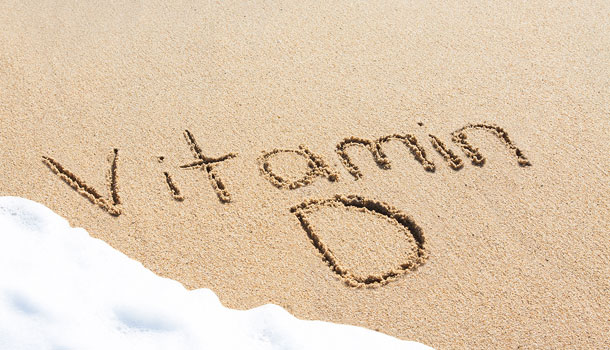
Vitamin D and Cancer:
Scientists are looking at vitamin D in seventeen types of cancer. Patients in geographically sorted epidemiological studies were found to have an inverse relationship with sunlight exposure and the rates and incidence of death in certain cancers. Research indicates that vitamin D maintains healthy cells with normal life spans, discourages out of control cell reproduction, promotes cell differentiation, supports apoptosis (programmed cell death) and helps prevent metastases (spreading) and angiogenesis (new blood cell growth to tumours). Its relationship to calcium may also be beneficial, as calcium had been found to decrease proliferation and induce differentiation (where a simple cell becomes a more complex cell) in epithelial (skin) cells. More than sixty epidemiological studies worldwide have shown a correlation between vitamin D deficiency and cancer.
In some studies there are dramatic effects, in others not so much. Whether that is because of an inadequate amount of supplementation or because the greatest effects are seen when supplementing from a severe deficiency to a more adequate level is not yet known.
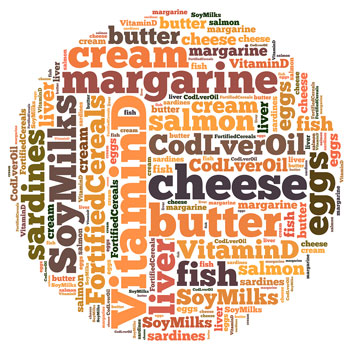
The body is amazing. The more we learn how complex it is, the more we learn how simple some of the things that help it work well are. Simple things such as good nutrition, sleep, touch, activity, happiness – and even sunlight – may prove vital to our well being and mitigate disease and chronic stress. It is worth obtaining the blood test and talking to your doctor about it.
But regardless of what anyone says, I, for one, am going to stop, raise my face to the sun, spend fifteen minutes, whenever I can, to absorb a little warmth, and relish the smile that spreads across my face. A little happiness – along with some oysters, sardines, salmon, sushi wrapped in seaweed, some mushrooms and a supplement for good measure!
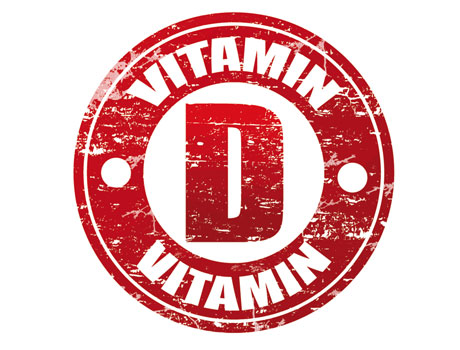
| Disease | Implications for Vitamin D |
|---|---|
| Osteoporosis |
|
| Rheumatoid Arthritis |
|
| Multiple Sclerosis |
|
| Type I Diabetes |
|
| Asthma |
|
| COPD |
|
| Colon Cancer |
|
| Breast Cancer |
|
| Lung Cancer |
|
| Prostate Cancer |
|
| Pancreatic Cancer |
|
| Anti-Inflammatory |
|
| SAD/Depression |
|
| Cardiovascular Disease |
|
| Kidney Disease |
|
| Alzheimer’s Disease |
|



